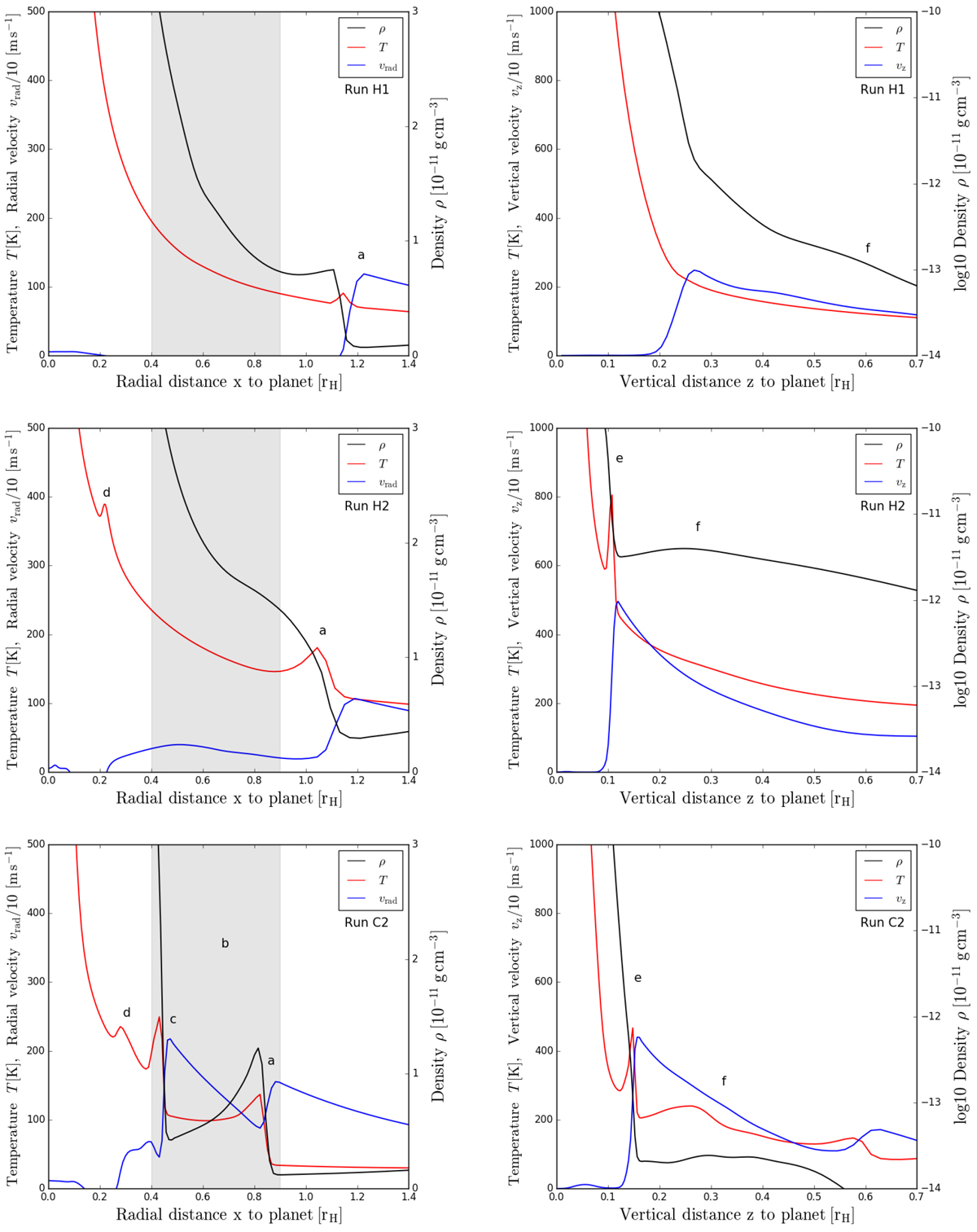Fig. 15

Overview of slices through flow and structure variables, identical to Figs. 4 and 11, only now for the runs H1 (“high opacity”, top), H2 (“deep”, middle), and C2 (“Bell & Lin”, bottom) at orbit 5 in the midplane (left column) and the vertical values (right column). The letter labels indicate the same physical features as in previous figures: CSD spiral arm shock (a), same volume as the free-fall region in run C1 for comparison (b), shock due to free-fall of gas from the spiral arms towards the CPD (c), temperature bump due to the CPD spiral arms (d), vertical accretion shock (e), and accretion column from colliding flows (f). It becomes evident that the envelope with high opacity suppresses structural and flow features, consistent with the literature (e.g. Lambrechts et al. 2019). A deeper potential raises temperature even above those of the low-opacity run, but only suppresses the formation of a free-fall region. The Bell & Lin opacities recover all features we found previously in the nominal run.
Current usage metrics show cumulative count of Article Views (full-text article views including HTML views, PDF and ePub downloads, according to the available data) and Abstracts Views on Vision4Press platform.
Data correspond to usage on the plateform after 2015. The current usage metrics is available 48-96 hours after online publication and is updated daily on week days.
Initial download of the metrics may take a while.


